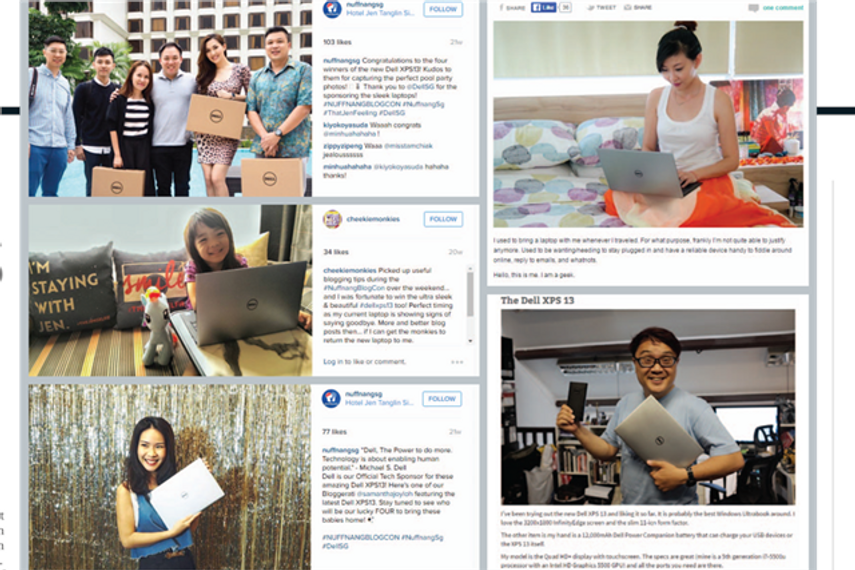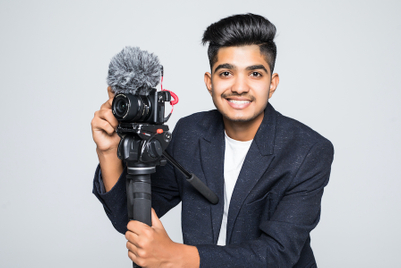
The Digital and Social Media Advertising Guidelines by the Advertising Standards Authority of Singapore (ASAS) are expected to be finalised by the end of June this year.
Professor Sze Wee Tan, ASAS chairman, tells Campaign Asia-Pacific that the advisory council has been sounding out the industry about such guidelines since 2013.
However, it was only after an incident involving Singtel and Gushcloud that the move to formalise social media guidelines gained traction.
“The industry hence saw the need to draw up ethical guidelines for social media influencers,” Tan adds.
The incident in question occurred in March 2015, when blogger Wendy Cheng, better known as Xiaxue, posted a brief by Gushcloud to its influencers, detailing instructions for a youth marketing campaign for Singtel in June 2014.
The brief from the influencer network—whose clients include Amazon, Coca-Cola, Citibank and Tigerair—promised perks, such as cash and discounts on mobile phones, if they drove new subscribers to Singtel’s Youth Plan by complaining about the services of rival telcos M1 and StarHub.
After the controversial campaign came to light, Singtel fired the employee who worked on the campaign, terminated its contract with Gushcloud and CEO Chua Sock Koong publically apologised to her competitors.
The country’s Infocomm Development Authority (IDA) also issued a stern warning to the telco for engaging in an online smear campaign, after it received formal complaints from M1 and StarHub.
Tan says that once the guidelines are finalised, ASAS fully expects the support of members and industry players, as the guidelines work in their interest and upholds the credibility of the industry. “That is why we waited all those years,” he adds. “We would not have gone ahead if the industry isn’t behind this.”
Tan says that judicious guidelines can help the industry evolve positively. “This means being sensitive to the special requirements of the industry—in this case, social media,” he adds.
There is currently little insight into just how much money is involved in the influencer marketing space, with few estimates or studies being conducted, especially in the region. In addition, within the category of influencers, a distinction must be made between social media celebrities and subject matter experts—the use of the former dominating campaigns in the region.
Lack of third-party measurement aside, many brands remain convinced of the benefits. A study done by US-based digital agency RhythmOne in March 2015, claims that marketers can earn US$6.85 of media value for every dollar spent on influencer marketing.
Additionally, it found that 60 percent of advertisers plan to increase their spending on influencers in the year ahead.
Margaret Franco, VP of marketing for commercial sales and enterprise solutions at Dell Asia-Pacific and Japan, says marketers need to remember that “earned” and “owned” activities need to remain authentic and credible in order to be effective. “Deviating from this is actually the largest pitfall associated with influencer activity.”
Franco believes the new guidelines encourage this and will definitely be effective for “not only brands, but more importantly consumers”.
Interestingly enough, one of the many parties consulted in the draft process of the guidelines was Gushcloud. Co-founder Althea Lim tells Campaign that the company believes the upcoming regulations can provide more clarity on the rules of engagement and more legitimacy for the use of influencer marketing.
Lim also says that influencer networks like Gushcloud will have to work with relevant parties to educate their influencers. “It may take time, but we believe it progresses the industry.”
Lim describes Singapore as a relatively mature market with regards to the use of influencers in marketing and PR campaigns. “Typically influencers in Southeast Asia help put a face to the brand, increase recall and aid in retention,” she adds. “This has resulted in regular spending on influencers.”
With the establishment of guidelines comes the question of compliance, and when asked about potential penalties in store for influencers or brands, ASAS’s Tan says “penalties” would not be in the form of criminal or civil sanctions. For example, in order to ensure compliance, the ASAS can inform trade and advertising associations to withhold trading privileges from the advertiser and publicise the advertiser’s actions as a form of adverse publicity.
The council could also refer the matter to the Consumers Association of Singapore (CASE) for action under the Consumer Protection (Fair Trading) Act (CPFTA), which states that it is an unfair practice to make false claims about products and services.
Dell’s Franco reports that the upcoming guidelines would not necessitate a change in their current influencer practices as the technology brand’s core strategy around social media and influencers is to always be transparent and authentic.
“One very pragmatic example is the standard practice and policy for every Dell marketer and employee to post #Iwork4Dell in social posts that promote Dell’s solutions or capabilities,” she adds.
Tan says that bloggers, networks and personalities are expected to comply with the guidelines as well and only accept projects that adhere to the guidelines.
Gushcloud’s Lim remains confident that it would not be an issue with personalities the network works with.
Campaign Apac View: Hopefully these regulations are in time to save Singapore’s influencer market from itself.
(This article first appeared on CampaignAsia.com)


.jpg&h=334&w=500&q=100&v=20250320&c=1)
.jpg&h=334&w=500&q=100&v=20250320&c=1)
.jpg&h=334&w=500&q=100&v=20250320&c=1)




.jpg&h=334&w=500&q=100&v=20250320&c=1)



.jpg&h=268&w=401&q=100&v=20250320&c=1)

.png&h=268&w=401&q=100&v=20250320&c=1)

.jpg&h=268&w=401&q=100&v=20250320&c=1)


